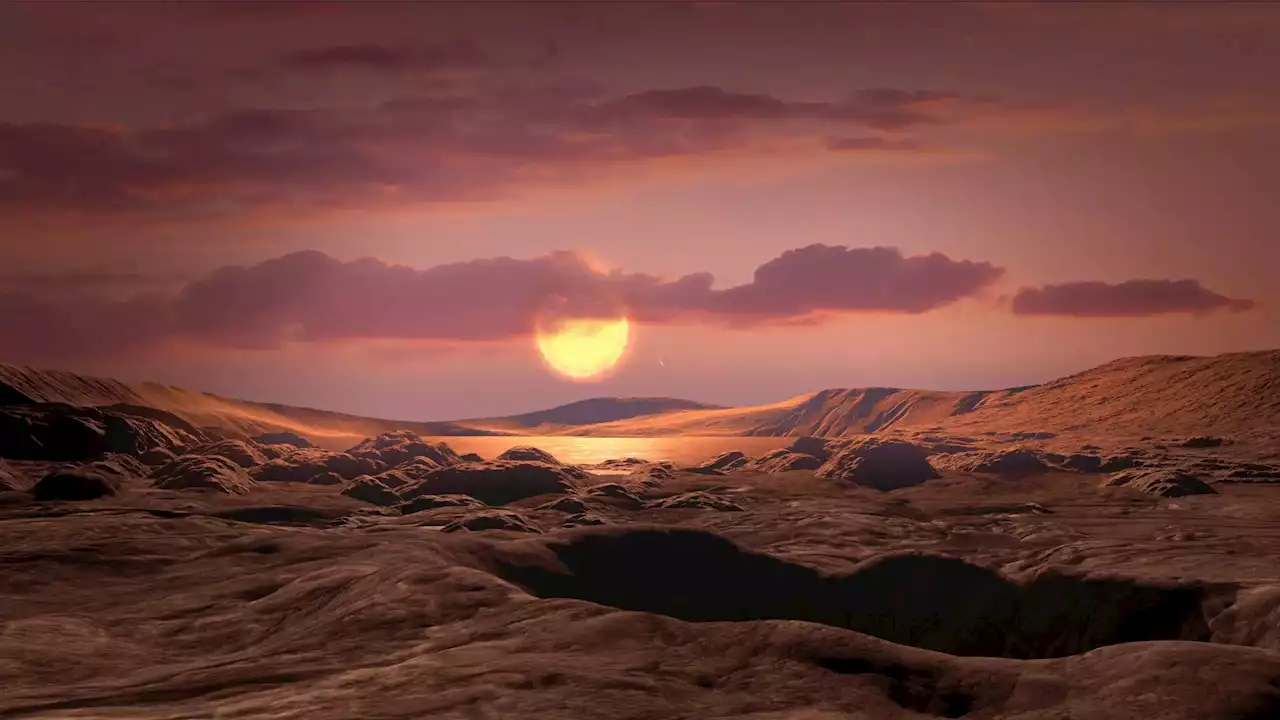A bright infrared light blazing from two galaxies in the process of merging has just been yanked out of hiding.
, astronomers have pinpointed the exact location of the light, behind a thick wall of dust obscuring it in other wavelengths. Whatever is producing the light is yet unknown, but narrowing down where it is will help figure out what it is, and how it shines so much more brightly than expected.
Although the Universe is mostly empty space, mergers between galaxies are not uncommon. Massive galaxies are drawn together by the inexorable pull of gravity, combining to form larger galaxies. frameborder="0″ allow="accelerometer; autoplay; clipboard-write; encrypted-media; gyroscope; picture-in-picture; web-share" allowfullscreen>
Australia Latest News, Australia Headlines
Similar News:You can also read news stories similar to this one that we have collected from other news sources.
 Astronomers Discover Earth-Size Planet – Promising Target in the Search for Alien LifeAstronomers find rare Earth-mass rocky planet suitable for the search for signs of life. A newly discovered exoplanet could be worth searching for signs of life. Analyses by a team led by astronomer Diana Kossakowski of the Max Planck Institute for Astronomy describe a planet that orbits its home
Astronomers Discover Earth-Size Planet – Promising Target in the Search for Alien LifeAstronomers find rare Earth-mass rocky planet suitable for the search for signs of life. A newly discovered exoplanet could be worth searching for signs of life. Analyses by a team led by astronomer Diana Kossakowski of the Max Planck Institute for Astronomy describe a planet that orbits its home
Read more »
 Astronomers create map of all the matter in the universe | Digital TrendsRecent research has produced the most accurate map to date of how both matter and dark matter are spread across the universe.
Astronomers create map of all the matter in the universe | Digital TrendsRecent research has produced the most accurate map to date of how both matter and dark matter are spread across the universe.
Read more »
 Astronomers Discover New Clues Regarding Stellar ‘Glitching’Recent findings indicate that a significant number of stars exhibit irregularities in their cores. Scientists have discovered a method to examine the internal workings of some of the brightest stars in the sky. An international team of researchers, utilizing data from NASA's Kepler space telesco
Astronomers Discover New Clues Regarding Stellar ‘Glitching’Recent findings indicate that a significant number of stars exhibit irregularities in their cores. Scientists have discovered a method to examine the internal workings of some of the brightest stars in the sky. An international team of researchers, utilizing data from NASA's Kepler space telesco
Read more »
 Astronomers poised to hunt new kind of gravitational waveKeith Cooper is a freelance science journalist and editor in the United Kingdom, and has a degree in physics and astrophysics from the University of Manchester. He's the author of 'The Contact Paradox: Challenging Our Assumptions in the Search for Extraterrestrial Intelligence' (Bloomsbury Sigma, 2020) and has written articles on astronomy, space, physics and astrobiology for a multitude of magazines and websites.
Astronomers poised to hunt new kind of gravitational waveKeith Cooper is a freelance science journalist and editor in the United Kingdom, and has a degree in physics and astrophysics from the University of Manchester. He's the author of 'The Contact Paradox: Challenging Our Assumptions in the Search for Extraterrestrial Intelligence' (Bloomsbury Sigma, 2020) and has written articles on astronomy, space, physics and astrobiology for a multitude of magazines and websites.
Read more »
 Astronomers discover 12 new moons around Jupiter, putting count at record-breaking 92The new moons were discovered using telescopes in Hawaii and Chile, and their orbits were confirmed with follow-up observations.
Astronomers discover 12 new moons around Jupiter, putting count at record-breaking 92The new moons were discovered using telescopes in Hawaii and Chile, and their orbits were confirmed with follow-up observations.
Read more »
